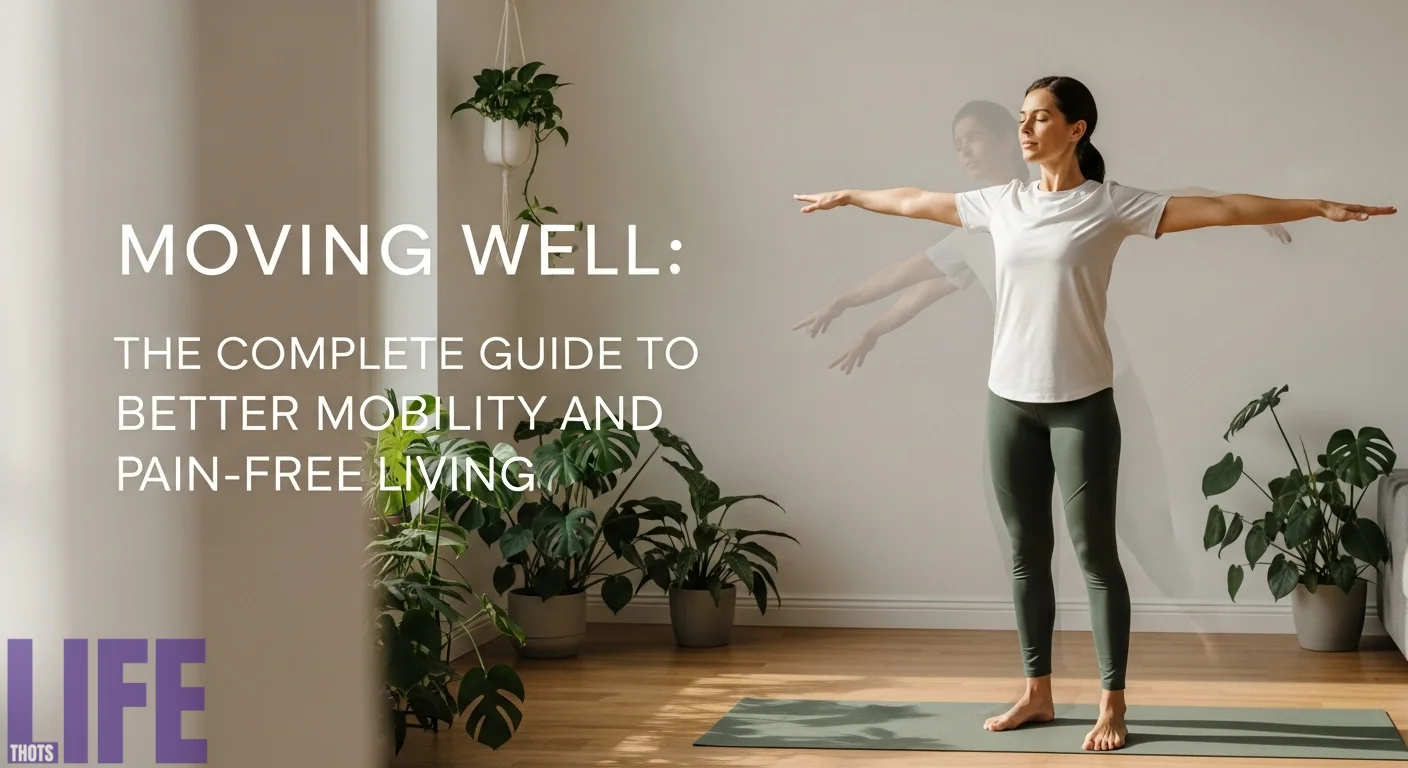Blog
Moving Well | The Complete Guide 2 Better Mobility and Pain-Free Living

Mornings shouldn’t feel like a wrestling match with your own body. Yet for many of us, that first stretch out of bed comes with stiffness groans, and a silent plea for mercy from our joints. The good news? That doesn’t have to be your baseline. Moving Well: The Complete Guide to Better Mobility and Pain-Free Living is here to change how you think about movement—no jargon, no gimmicks, just practical, real-world advice. In this guide, you’ll learn why mobility matters more than most people realize, what’s holding you back, and exactly how to restore effortless, pain-free motion for the long run.
Why Mobility Matters
What does mobility actually mean?
Mobility isn’t just about being flexible or doing yoga poses. It’s about how well you can move your joints and body in real life bending, reaching, twisting without pain, restriction or hesitation. One clear definition: it’s your ability to move purposely and safely in your environment.
The cost of skipping mobility work
Here’s a brutal truth: poor mobility leads to pain, awkward movement, risk of falls, frustration with daily tasks. For example, when your hip or ankle can’t move properly, your knee or back may pick up the slack and then surprise: pain shows up.
How this guide will be better
- We merge everyday movement + pain relief + performance in one place.
- We include new info: e.g., simple diagnostic approach (find your mobility blockers), recent studies on mobility/pain, and lifestyle-hacks you won’t see commonly.
- We keep language simple, conversational and structured so you can follow the path rather than just read it.
Understand the Blockers What’s Really Holding You Back?
Sitting too much
Chances are, you spend a lot of time seated desk, couch, commute. That messes with hips, glutes, spine. Tight front of hips. Sluggish back. Result: stiff moves, weird pain.
Muscle imbalance & joint stiffness
Maybe your quads are strong, your glutes lazy. Or elbows fine, wrists stuck. Muscles, tendons, joints they all affect each other. Research shows mobility isn’t just flexibility; it’s strength, control, coordination, stability.
Pain or injury history
If you’ve had pain before back, hip, knee you might have developed protective movement patterns (limping, avoiding certain moves) which then reduce mobility further. For example: after surgery, early mobility work helps reduce pain and regain movement.
Weak movement habits
Maybe you don’t warm up, you skip mobility because you think it’s optional. But mobility is like your “movement foundation” skip it and the house wobbles.
A Three-Phase Plan for Moving Well
Your Movement Fix: Stop Wobbling, Start Moving.
Assessment + Awareness
Find your tight spots before you waste time stretching everything
No rounding your back. Can you do it?
Heels down, no pain. How deep?
Track getting out of chairs, stairs, turning around
Mobility Foundation
4-6 weeks of actual work on your problem zones
Integration
Stop thinking “mobility work” and just move well
Combine with your regular stuff (walk, run, play, work)
Mini-breaks during meetings: 1-2 min of ankle circles, hip openers
Pain = feedback, not a stop sign. Tightness or weakness?
Foam roller & band work after you’ve built control
Pain-Relief
If you have nagging pain:
- Identify when it occurs (after sitting, during walking, first thing in morning).
- Trace what motion is restricted (ankle, hip, shoulder).
- Use mobility drill before movement (warm-up) and after movement (cool-down).
- If pain persists, consider professional help (physical therapy). As one article states, early mobility-based rehab after surgery helps restore movement and reduce discomfort.
New Tips You’ll Rarely See Elsewhere
- Mini-mobility habit triggers: Pick 2 times a day (e.g., after coffee, before dinner) and do 1 movement you dislike. Turns into habit.
- Shoe and surface check: Hard shoes, flat surfaces, stiff soled footwear all reduce natural ankle motion. Try softer soles, barefoot indoors, and vary surfaces.
- “Movement debt” log: Instead of only tracking steps, track “stuck movements” (how many minutes you sat without movement, how many times you twisted vs didn’t). Awareness gives power.
- Contextual movement reminders: Set your phone wallpaper to something like “Move the hips now” or stick a note on your monitor. This isn’t just about gym work it’s about life movement.
- Pain-mobility reframe: Pain doesn’t always mean “stop moving.” Often it means “your movement loop is broken.” When treated with control, mobility can reduce pain over time. (Supported by older adult study on pain + mobility.

Conclusion
Here’s the truth: moving well isn’t a luxury it’s the foundation of a life where you don’t dread getting out of bed, picking up your kid, bending to tie your shoes or enjoying what you love doing. The good news: you’re not stuck with stiffness, pain or limitations. Follow this guide Moving Well: The Complete Guide to Better Mobility and Pain-Free Living and you’ll build a body that works for you, not against you. Discover your blocks. Build your mobility foundation. Then bring it into your life. Do that, and movement stops being a chore and starts being freedom. Let’s get moving.
